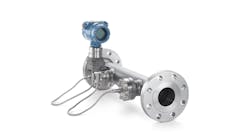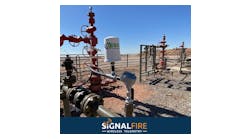By Matt Migliore
Demand for water treatment systems has an inverse relationship to the availability and quality of water resources worldwide. So as the global supply of clean water continues to fall, investment in water treatment chemicals and systems figures to show a marked rise. Likewise, as clean water resources grow more and more scarce, the cost of water goes up, which is driving the trend toward industrial water reuse. "New equipment technology, such as membrane and thermal technology, are increasingly part of an integrated treatment solution," says Bill Benner, a global product manager for the Water & Wastewater segment of GE Power & Water. "By using membrane technology in an industrial setting or municipal application, users can achieve levels of water quality that were not common 10 years ago." In addition, Benner says modern-day thermal water treatment systems can achieve zero liquid discharge conditions – something that is not possible with equipment or chemicals alone.Regulatory mandates and the desire to maximize cost savings are the primary drivers of water reclamation efforts worldwide. "The cost of water (acquisition, handling, discharge, and energy costs) is on the rise," says Benner. "Most industrial plants are looking to reduce the expense of water treatment overall, whether it’s acquisition costs, discharge fees, or energy costs to handle water." Water reuse offers industry a significant opportunity to cut cost. "Where industrial water users may have at one time discharged water, they are now looking at creative ways to clean their water outputs and reuse it as make-up water for cooling towers, for example," says Benner. According to Peter Bouchard, director of marketing for Koch Membrane Systems (www.kochmembrane.com), part of the stimulus for industrial users to push forward on water reclamation initiatives has come from outside sources. "We are seeing municipalities push back on industry to help reduce water consumption – water footprint for industry is becoming a larger player," says Bouchard. "KMS is working with a number of companies that are looking to reduce their water footprint via recycle and reuse with both ultrafiltration and reverse-osmosis." For suppliers of water treatment systems, technology efforts and regulatory initiatives have a symbiotic relationship. According to Bouchard, while sophisticated technologies for water treatment already exist, a lack of regulation and limited project funding are holding uptake for water treatment systems somewhat in check. Benner has a more optimistic outlook. "Regulation is increasing, technology is advancing, and municipal and industrial users are working harder than ever to reduce their environmental footprint," he says. "This will result in a more efficient use of water resources." In fact, Benner sees recent advances in water testing and monitoring resulting in regulations that bring treatment limits to increasingly low levels. "For example, there is new regulation regarding treatment of mercury down to the [parts per trillion] level," he says. "The testing capabilities have been driven down to this level, and we are already seeing regulation enforcing those limits." Going forward, Benner says water treatment systems will continue to evolve to reach new levels of energy efficiency, lower environmental impact, and increased safety. "[Suppliers] will also focus on developing technologies that are more robust to work under tougher operating environments, as well as easier to monitor and control," says Benner. "In addition, knowledge management will be at the core of water treatment with more accurate, advanced technologies."Bouchard sees that the debate over private versus public financing of projects will be a particularly hot topic in the water industry. For example, he says, PERC Water (www.percwater.com) recently won a project in Santa Paula, Calif. to build, own, operate, and finance a water treatment system that will aim to eliminate the city’s noncompliance discharges into the Santa Clara River. "The finance was one of the keys to winning [the project]," says Bouchard. In addition, he says stronger regulations in the years to come will result in improved water infrastructure and safer drinking water. Matt Migliore is the editor-in-chief of Flow Control magazine. He can be reached at [email protected].


